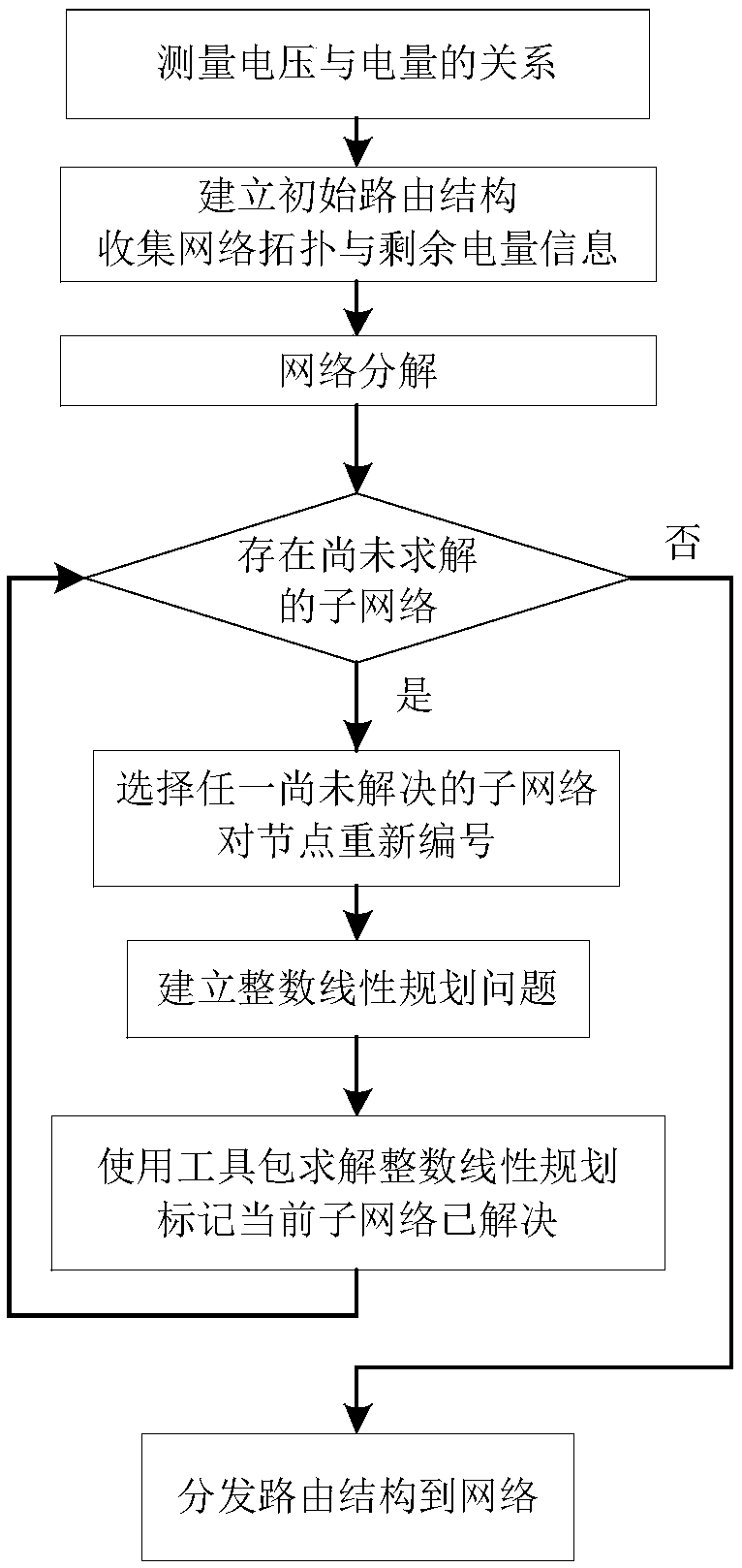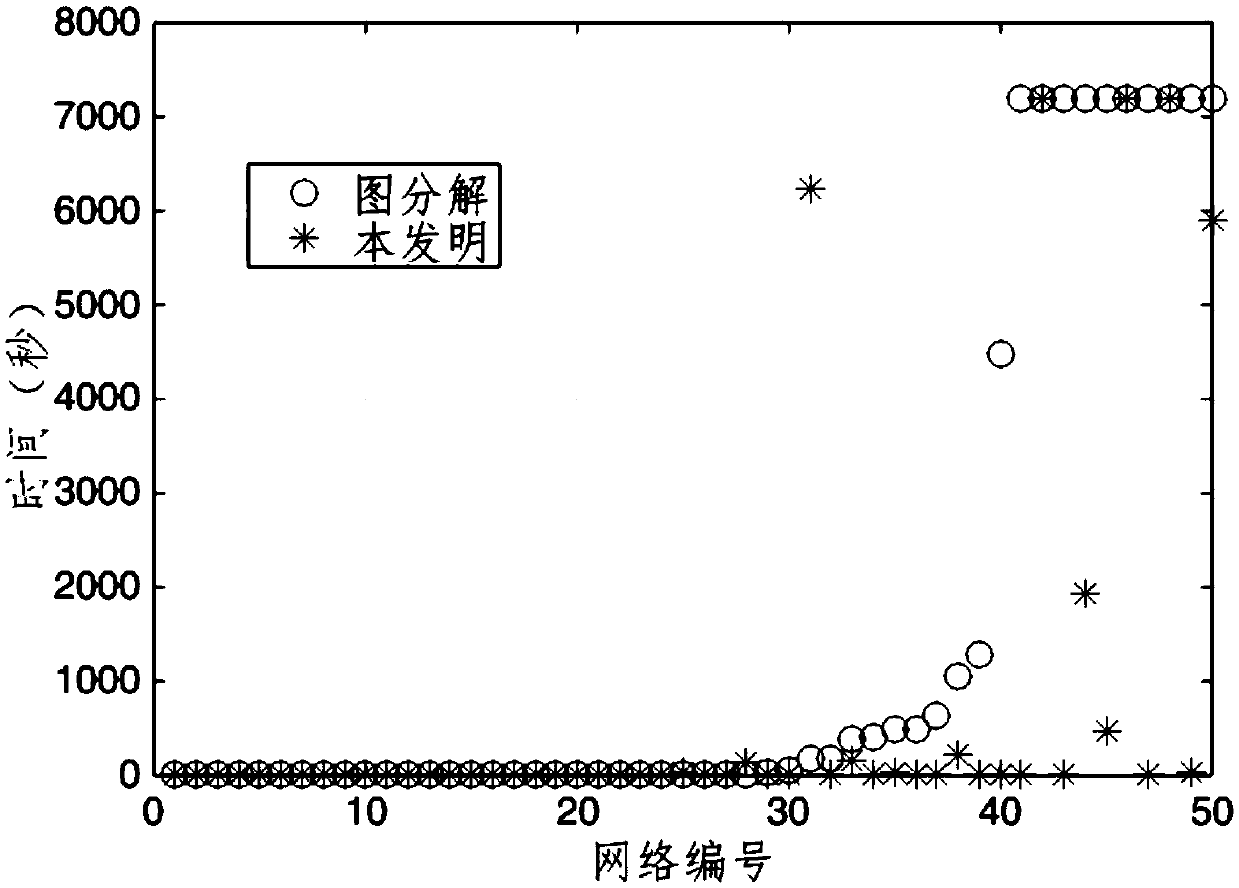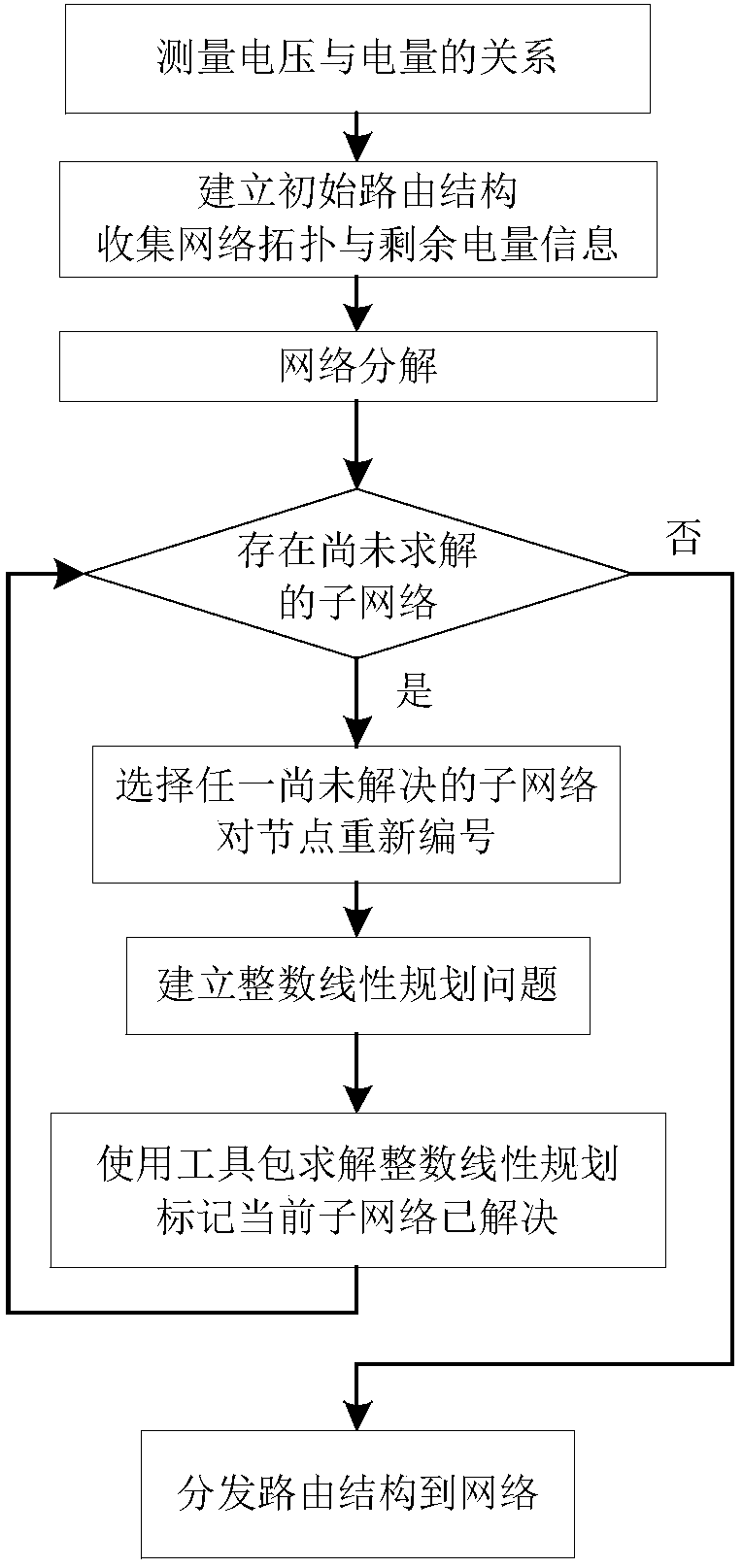A Data Collection Method for Energy Heterogeneous Wireless Sensor Networks
A wireless sensor and data collection technology, applied in the field of wireless networks, can solve the problems of long time consumption for constructing a routing structure, limiting the practicability of the method, and not considering the operation mode of the method, etc., achieving the effect of short time consumption and high practicability
- Summary
- Abstract
- Description
- Claims
- Application Information
AI Technical Summary
Problems solved by technology
Method used
Image
Examples
Embodiment example
[0083] The effect of the present invention can be further illustrated by the following simulation experiments. The sensor network contains 41 nodes, one of which is a sink node. The connecting edges between nodes are randomly generated as follows: the nodes are evenly distributed in a 100×100 square area, and the two nodes can communicate when the distance between them does not exceed 20m. The remaining energy of the node is evenly distributed within 1~10 joules, and the energy consumption of receiving and sending a data packet is 3.33×10 respectively -4 Jiaohe 6.66×10 -4 Coke. Randomly generate 50 network instances. Compare the present invention with the existing graph decomposition scheme.
[0084] figure 2 In order to simulate the time-consuming comparison results of the present invention and the existing method in the experiment, if a method takes more than 7200 seconds (2 hours), the operation of the method is forcibly terminated. Therefore, the existing method is in 10 ...
PUM
 Login to View More
Login to View More Abstract
Description
Claims
Application Information
 Login to View More
Login to View More - R&D
- Intellectual Property
- Life Sciences
- Materials
- Tech Scout
- Unparalleled Data Quality
- Higher Quality Content
- 60% Fewer Hallucinations
Browse by: Latest US Patents, China's latest patents, Technical Efficacy Thesaurus, Application Domain, Technology Topic, Popular Technical Reports.
© 2025 PatSnap. All rights reserved.Legal|Privacy policy|Modern Slavery Act Transparency Statement|Sitemap|About US| Contact US: help@patsnap.com



